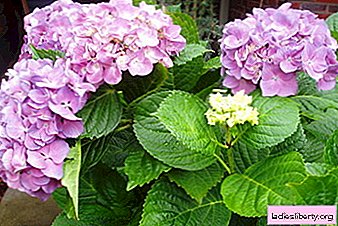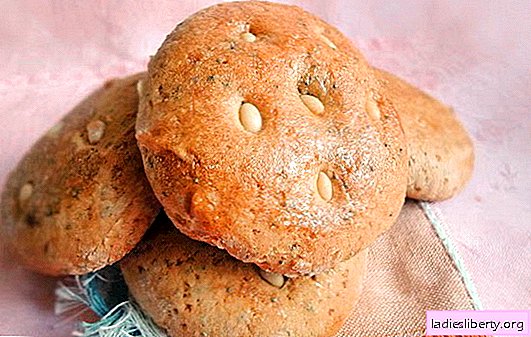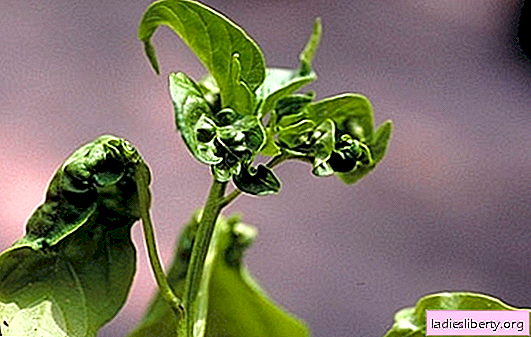
Rod Hydrangea (Hydrangea) family Hortensia represented about 90 species of plants. It comes from Asia, America and Japan, where it will grow in nature today, and in the culture this flower is spread all over the world. It is used as a decorative leafy and flowering plants, and grown in apartments, greenhouses and gardens.
Hortensia is a very beautiful wintering shrub, reaching a height of 2 m, decorated during the flowering period with large (up to 30-40 cm long) pyramidal inflorescences copiously covering it with yellowish-white flowers slightly reddening later. One bush can carry up to 100 or more inflorescences.
According to one of the versions, the name of this plant was given by a French physician and naturalist Philibert Commerson, who in the 18th century, during his trip to Japan, when he saw a bush full of flowers, began to ask the locals about it. When none of them could say his name, the doctor gave him a name in honor of his beloved Hortense.
In our ornamental horticulture, several species of this beautiful plant are used: tree hydrangea (Hydrangea arborescens), paniculate hydrangea, petiolian hydrangea, Bretshneider hydrangea (H. bretschneideri), as well as large-leaved or garden hydrangea (H. macrophylla)). Planted hydrangeas singly or in groups on the lawn. For any garden plot, park and square, they will be a real decoration.
Hydrangea - growing and care
For hydrangeas, you should choose well-lit areas with loose, rich in organic matter, moderately moist soils that have a neutral or slightly acidic reaction. Poor soil may also be suitable for tree hydrangea, although its flowering will be less intense. It is also the most drought-resistant of all species, while paniculate hydrangea is more moisture-loving, and for large-leaved hydrangea, drying is fraught with death.
To improve root aeration, it is necessary several times a year to loosen the surface of the soil around the bushes to a depth of 5 cm. Since hydrangea is a very moisture-loving plant, it should be watered every week; .
Proper pruning is very important for hydrangeas. It should be done in early spring, before the active growing season. Old inflorescences should be removed before the first pair of strong and healthy buds. It is also useful to annually make adult plants pruning at the root of several old, weak or too dense branches.
Hydrangea - transplanting and reproduction
When transplanting plants, they are placed at a distance of 1 to 1.5 m from each other, pitting up to 60 cm deep and adding fertilizers to them, such as organic matter, urea, granulated superphosphate, and potassium sulphate. After such planting plant 2 years do not need to feed. Then you need to spend up to several dressings per year: the first is in the spring, the period of beginning of growth, the second - in the period of appearance of buds, the third and fourth dressings are carried out in the summer.
Hydrangea is propagated by dividing the bush, layering and cuttings. For grafting take woody and green cuttings that can be propagated in winter. To do this, they are cut in the fall and stored in a refrigerator in plastic bags filled with wet sand. In February, they are planted in pots with a soil mixture of turf land, peat and washed river sand. You should also take care of good drainage.
Before planting in the pot, the lower part of the cutting must first be dipped in 1% powder of heteroauxin with talc. After watering, the cuttings should be covered with plastic wrap and kept in a bright place at a temperature of 20 ° C to 22 ° C. In about a month, green shoots should appear, which should be planted in shallows at the end of April. When the cuttings are well rooted, at the end of the summer they are planted in a permanent place.
Hydrangea - diseases and pests
Under the conditions of care, hydrangea rarely gets sick, and yet, it is prone to certain diseases. For example, if yellow mosaic spots or stripes appeared on the leaves, it means that the plant overtook such a viral disease as mosaic leaf disease. In this case, the affected shoots are cut and burned, and with a strong spread of the disease, the entire plant is destroyed.
Lightening leaves says chlorosis. It may occur due to excess lime or humus in the soil. To return a decorative look to the plant, it needs to be watered several times with a solution of potassium nitrate (20 g per 5 l of water is taken), and after three days, watered using the solution of ferrous sulfate in the same concentration.
If oily yellowing spots appeared on the leaves, which gradually darken and increase in size, as well as a yellowish bloom in their lower part, it means that the plant is affected by downy mildew. It may develop due to high humidity. To save the plant, it must be treated with a copper-liquid liquid, which is prepared from 150 grams of green soap and 15 grams of copper sulfate, taken in 10 liters of water.
Hydrangea can also be affected by pests: spider mites or green leaf aphids. In the first case, the plant should be sprayed with a solution of thiophos, prepared from 5-7 g of substance per 10 liters of water. Aphids are fought by spraying the plant twice with anabazine sulfate solution. To prepare the solution, take 15-20 g of anabazine sulfate per 10 liters of water. This remedy is the most radical and effective in the fight against leaf aphids.











